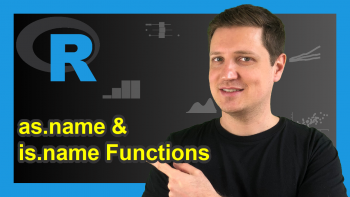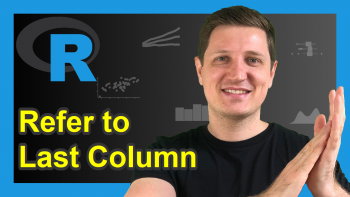mutate & transmute R Functions of dplyr Package (2 Example Codes)
This article illustrates how to add new variables to data sets with the mutate & transmute functions of the dplyr package in the R programming language.
The post is structured as follows:
- Creating Example Data
- Example 1: Application of mutate Function
- Example 2: Application of transmute Function
- Video & Further Resources
Let’s take a look at some R codes in action.
Creating Example Data
Before we can start with the application of mutate and transmute, we need to create some example data in R:
data <- data.frame(x1 = 1:5, # Create example data x2 = 5:9) data # Print example data # x1 x2 # 1 1 5 # 2 2 6 # 3 3 7 # 4 4 8 # 5 5 9
Note that our example data is a data.frame. However, we could also apply the code of this R tutorial to a tibble.
We also need to install and load the dplyr package of the tidyverse environment:
install.packages("dplyr") # Install dplyr add-on package library("dplyr") # Load dplyr add-on package
Now, we can move on to the programming examples…
Example 1: Application of mutate Function
Example 1 shows how to use the mutate function in R. Let’s assume that we want to create a new column containing the sum of our two original columns x1 and x2. Then we can use the mutate function as follows:
mutate(data, x3 = x1 + x2) # Apply mutate function # x1 x2 x3 # 1 1 5 6 # 2 2 6 8 # 3 3 7 10 # 4 4 8 12 # 5 5 9 14
As you can see based on the previous output of the RStudio console, the mutate function created a new data frame consisting of our original data plus a new variable containing the sum of our original data.
Example 2: Application of transmute Function
The second example explains how to apply the transmute function and its difference compared to the mutate function. Let’s have a look at the transmute command in action:
transmute(data, x3 = x1 + x2) # Apply transmute function # x3 # 1 6 # 2 8 # 3 10 # 4 12 # 5 14
The transmute function returns the same new variable as mutate. However, it does not retain our original data!
Video & Further Resources
Have a look at the following video that I have published on my YouTube channel. I’m explaining the content of this article in the video.
In addition, you could have a look at the related tutorials on this website. I have released numerous posts about the dplyr package already:
- Numbering Rows within Groups
- The dplyr Package
- R Functions List (+ Examples)
- The R Programming Language
Summary: You learned in this article how to create or transform variables of data frames and tibbles with dplyr in the R programming language. If you have additional comments and/or questions, let me know in the comments.






